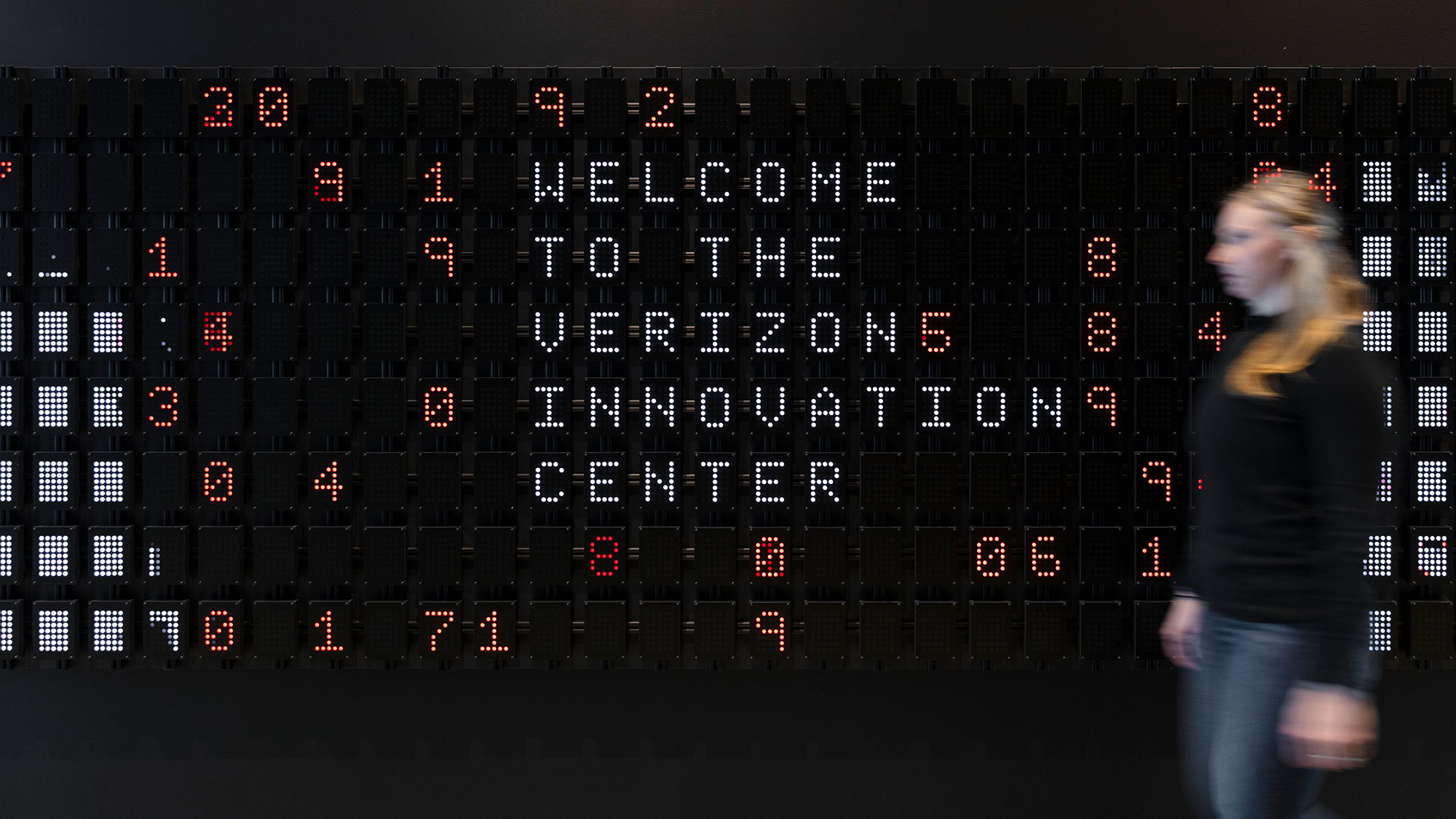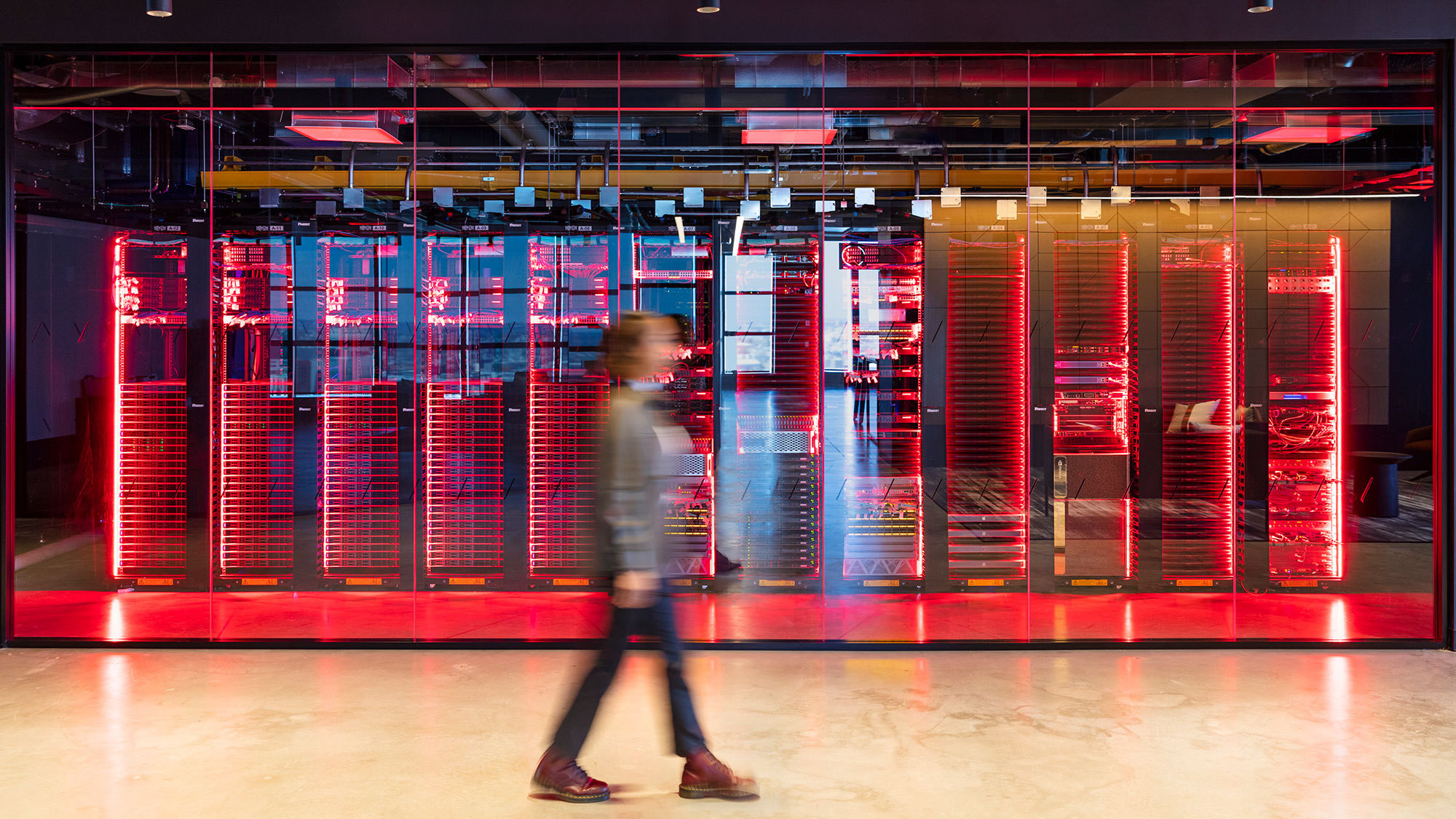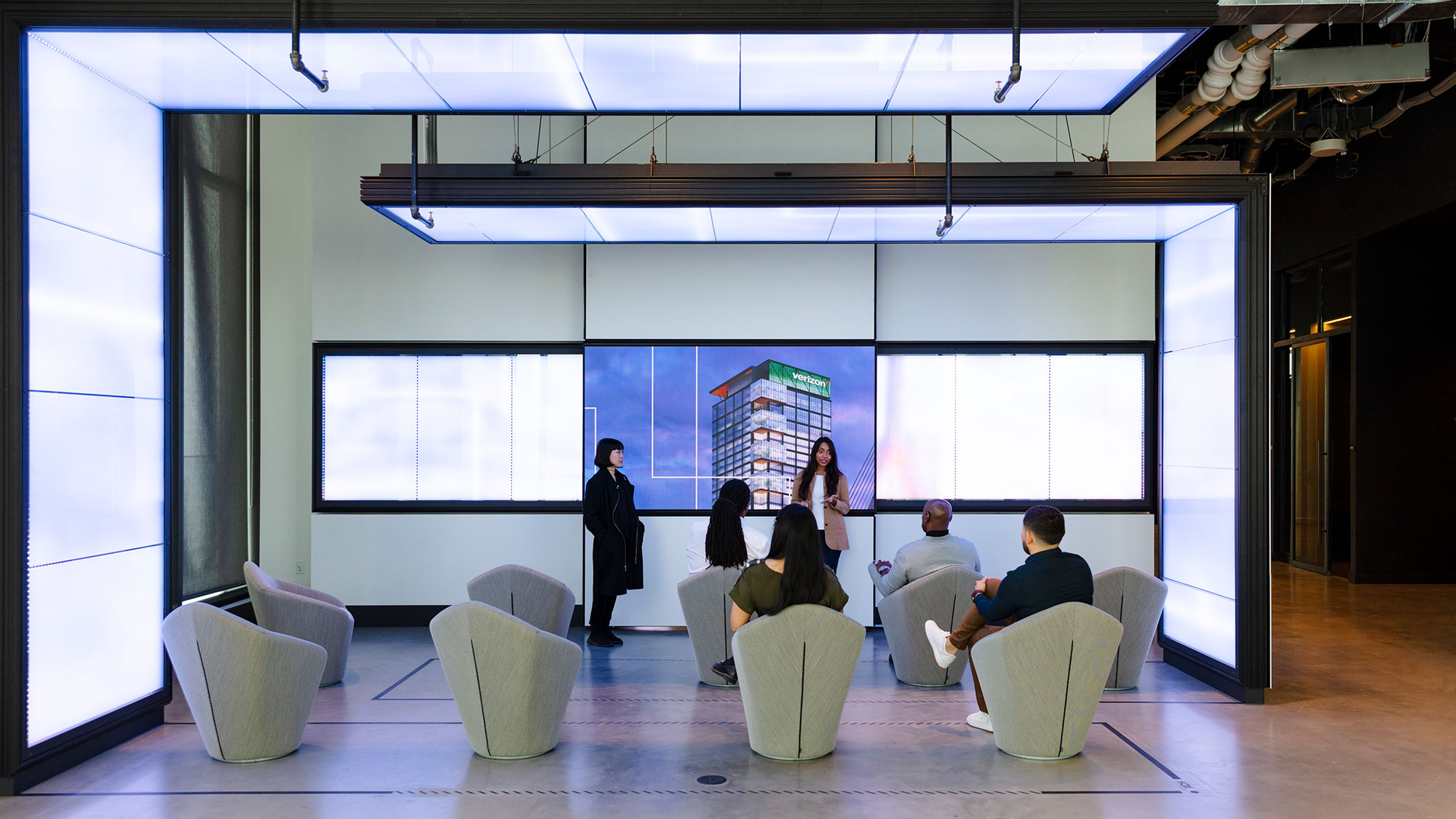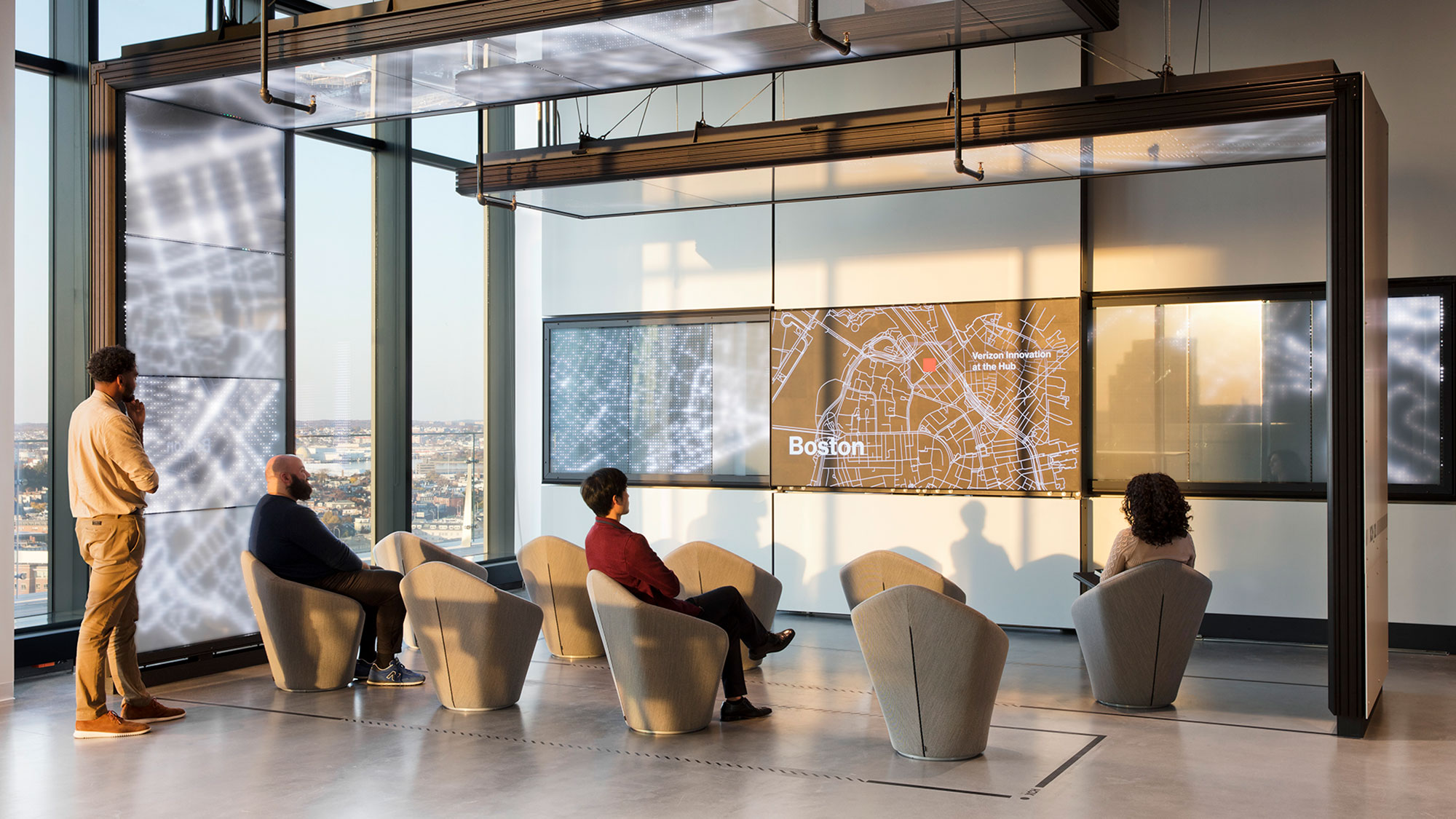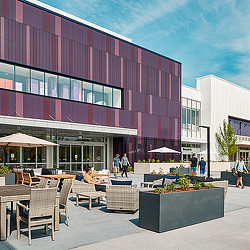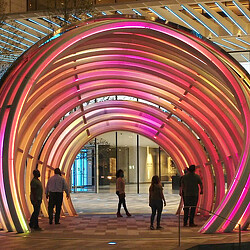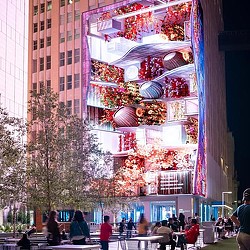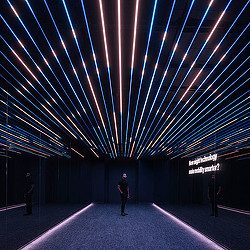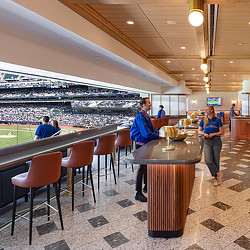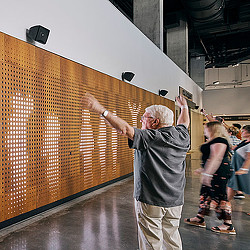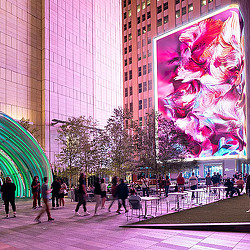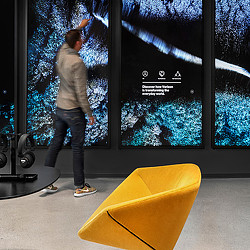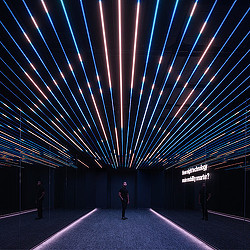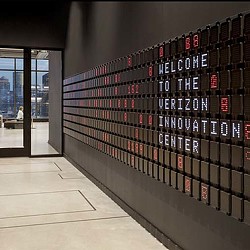How Customer Experience Centers Unify Spatial and Digital Branding
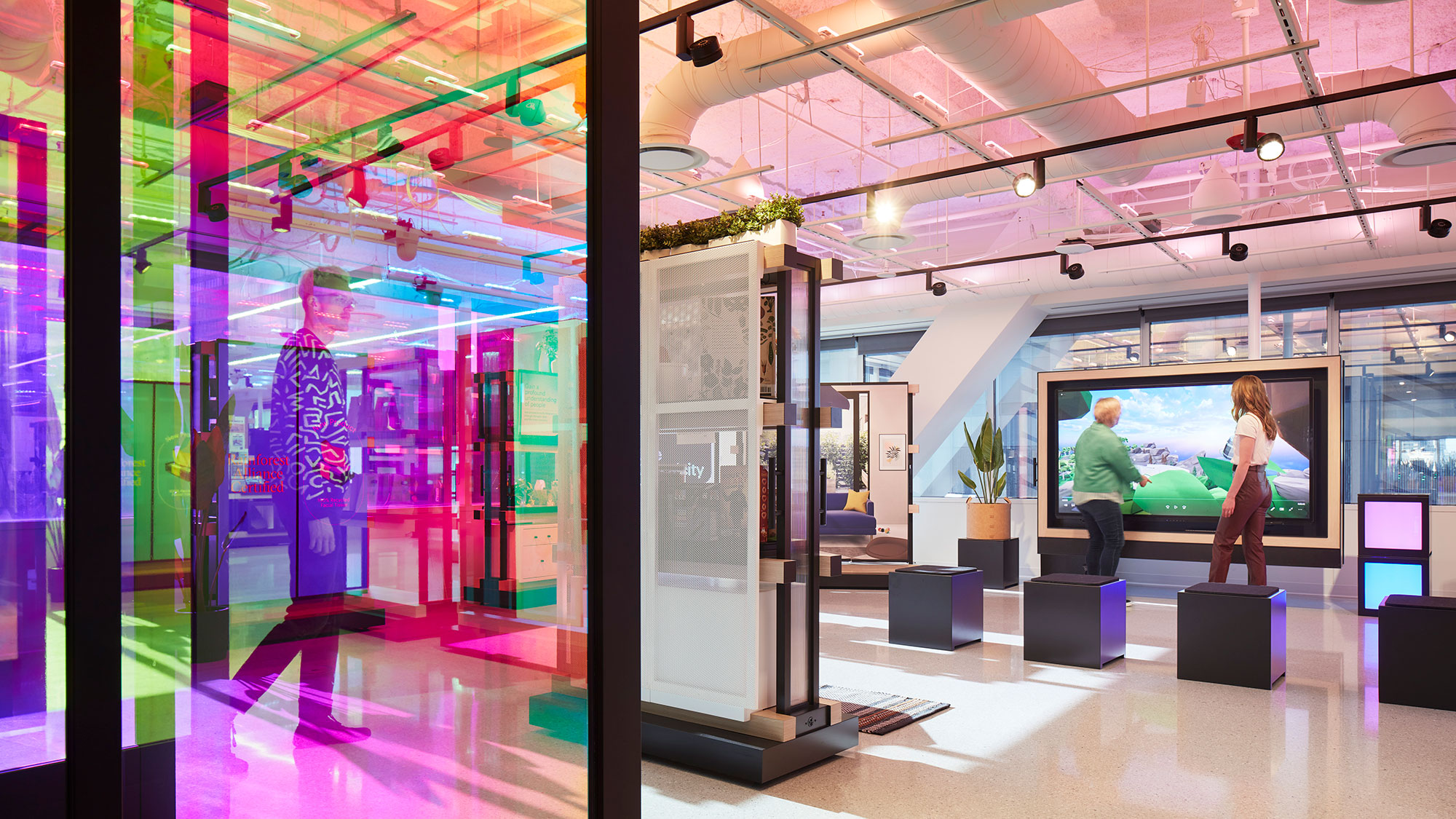
Sales suites. Marketing centers. Executive briefing environments. Whatever they’re called, customer experience centers — spaces that are purposefully designed for brands to create immersive experiences — are having a moment. No wonder — the pandemic left us hungry for visceral, in-person connections and must-be-there experiences. This resurgence reminds us that all great “in real life” experiences are rooted in holistic spatial design, optimized for all five senses, that addresses clients, customers, and employees as users first and foremost.
Multidisciplinary strategy and design teams at Gensler are creating new spaces and marketing capabilities with clients that may never have had this sort of facility in the past, helping businesses in a variety of industries reimagine customer engagement outside of the expected conference room-style presentation. When sensitively and holistically designed, customer experience centers (CECs) can perform on multiple levels by growing sales, diversifying customers, enriching the employee experience, and jump-starting workplace culture — all while activating underutilized real estate.
Three design principles can help companies reconceptualize their customers and employees as users of these spaces:
- Start with the end-to-end experience clearly mapped, including hybrid participation
- Consider how both space and content can adapt for a variety of different use cases
- Make sure technology deployed is modular and flexible, so it can be easily updated over time
At Accenture’s Chicago Innovation Hub, clients’ journeys through the space have been carefully crafted — from entry to immersive physical/digital experiences to a spectacular view and cafe for refueling on a higher floor. A dedicated experience center provides hands-on opportunities to engage with next-gen robotics, sensors, and digital collaboration technology, all designed to complement and enrich the experience of traditional presentations.
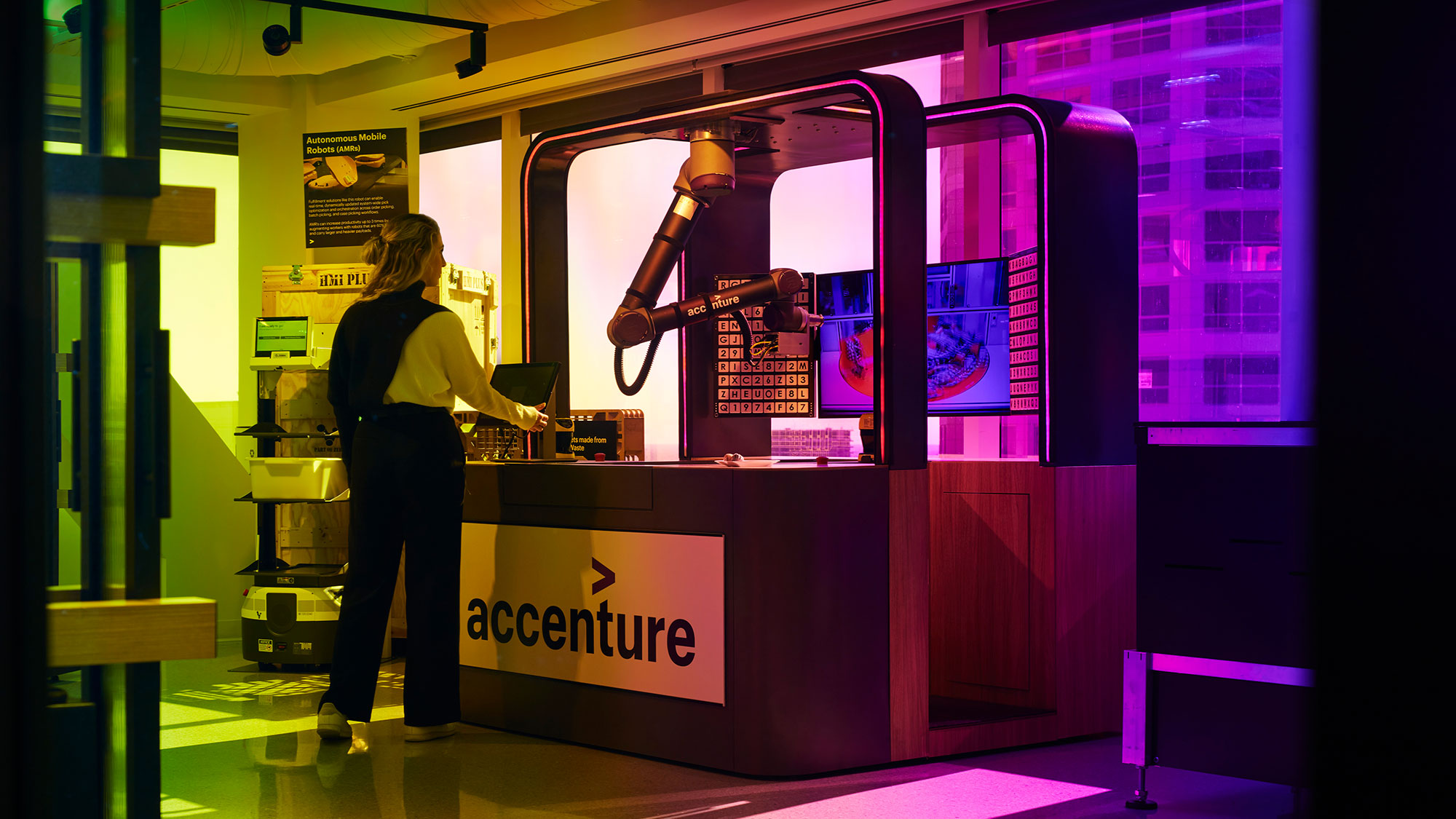
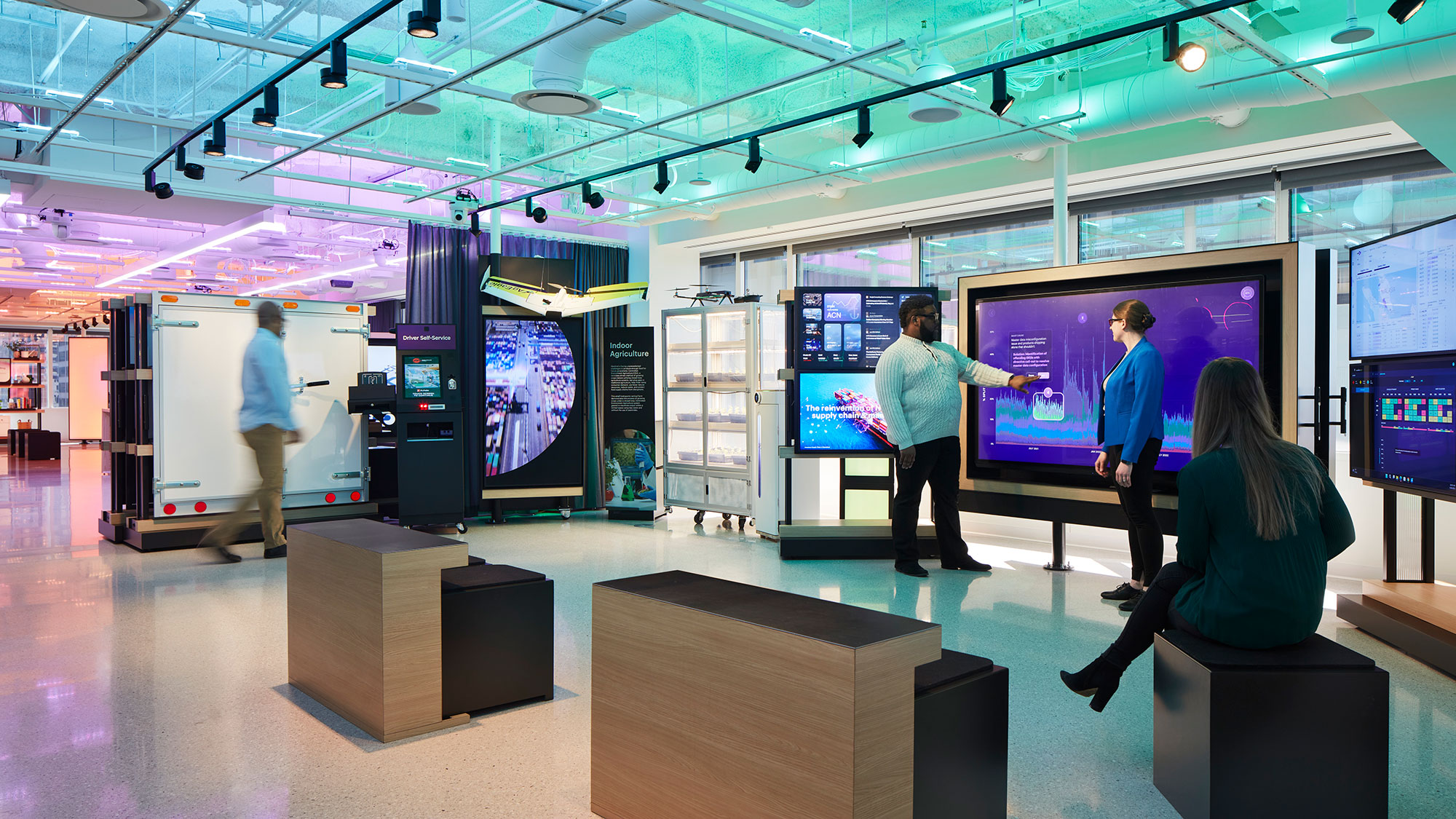
When complex, multifaceted expertise can be personalized and communicated impactfully, businesses build trust and establish an ownable point of view simultaneously, leaving customers thinking they know what they’re doing, they understand me, and this could be valuable for my business.
By accounting for the full experiential journey — from invitation to in-person experience to follow-up — Gensler is able to anticipate and answer questions down to the details, like “how will an invitation here generate excitement?” or “how are guests greeted?” to big-picture concerns like “how do we inject customized data and content into the experience?”
For employees, experience centers tangibly demonstrate commitment to innovation and allow wider swaths of personnel to experience “what we do for customers,” while also helping more employees feel included in what’s coming next. This transparency and engagement increases mission buy-in, growing the confidence it takes to be an ambassador (or even an intrapreneur) far beyond traditional sales or business development forces. An added benefit: experience centers can function beautifully as employee-centric “third spaces” for on-sites, team-building exercises, and even day-to-day breakrooms or coffee spots.
Our minds function differently when all the senses are engaged, and memories are cemented more strongly — the evidence from over a decade of Gensler Workplace Surveys is clear. CECs often enable hyper-personalization and interaction, as if the space and experience were conceived and purpose-built for that specific client tour, because of their capacity to engage visitors in a way that makes people put down their phones and pay attention to what they’re seeing, hearing, and touching.
These experiences do not have to be over-determined or set in stone. In fact, embedding adaptability in CECs is a key ingredient in their success. For example, the Verizon Innovation Center in Boston was designed as an adaptable and continually updatable platform. The space exists as a living and dynamic work-in-progress that follows the flow of emerging technologies and measures their impact and influence in the world. Content is customizable and scalable, and exhibits can not only transform for visitor relevancy, but also adapt and be responsive to time constraints, accessibility, and ergonomics.
The best CECs create an ideal opportunity to meaningfully unify a brand’s digital and physical experiences, while simultaneously providing a great environment for hybrid gatherings. There’s also significant potential for CECs to reactivate disused space while simultaneously providing greater incentive for clients and employees to show up in person.
A holistic design approach makes achieving all these goals possible with a single investment, integrating cutting-edge technology where it truly adds value, not to show off or look extravagant. These experiences are an opportunity for people to interact with the intangibles of brand tangibly, communally, and in real time. Beyond making abstractions like “innovation” (to say nothing of brand strategy, like mission and values) more impactful, CECs can allow everyone to see, touch, hear, and feel the future.
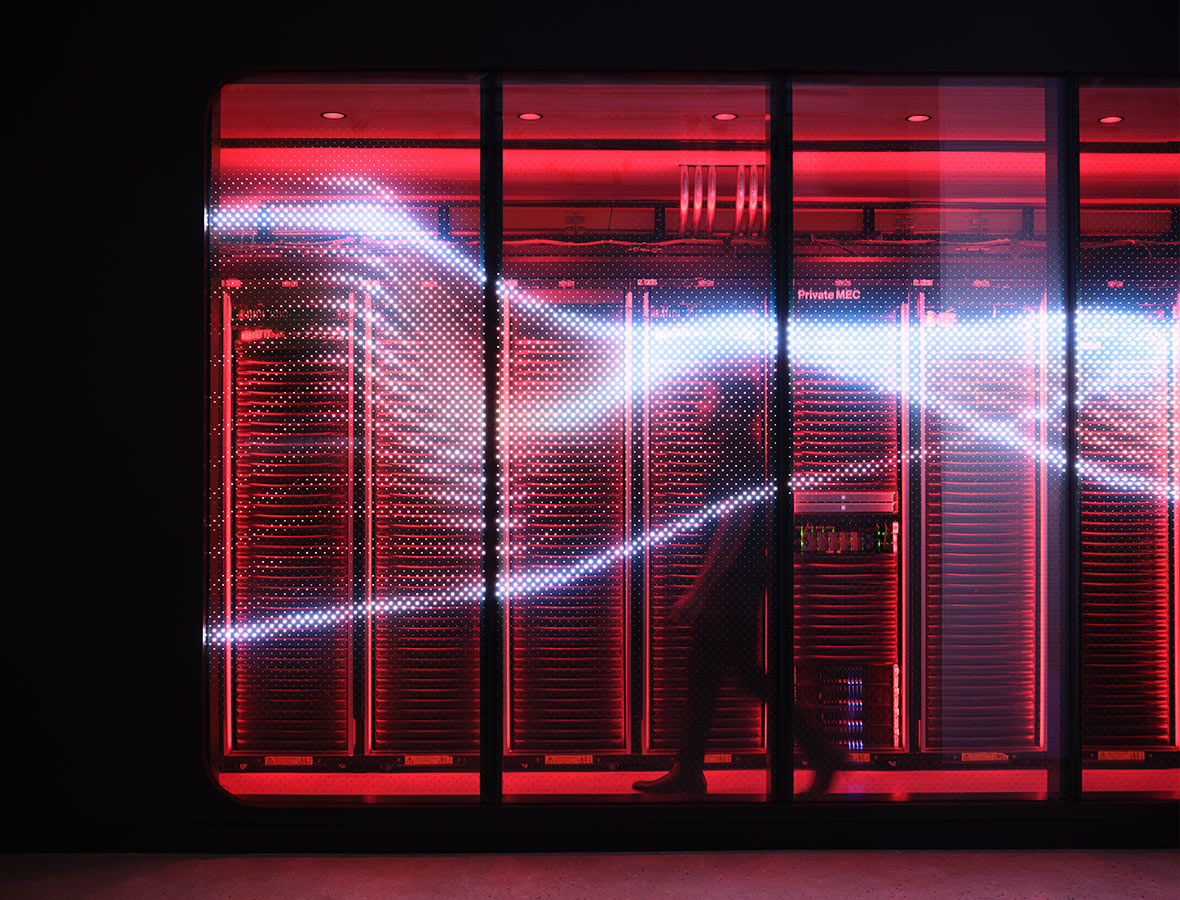
For media inquiries, email .
